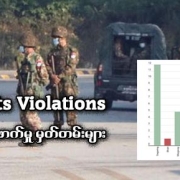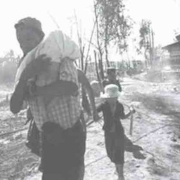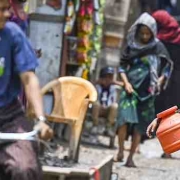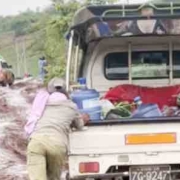NUG Critiques Thai Aid Corridor, Proposes Two-Track Process to Expand Myanmar Aid
Thailand is gearing up to launch a humanitarian corridor on its border to deliver aid to Myanmar people affected by armed conflict since the coup. The UN estimates that 18.6 million people need humanitarian assistance in Myanmar and more than 2.7 million people are now displaced nationwide.
Dr Win Myat Aye, minister for Humanitarian Affairs and Disaster Management in Myanmar’s parallel National Unity Government (NUG), told The Irrawaddy that the NUG welcomes the Thai government’s aid initiative but was unhappy with its implementation.
We don’t think it will be effective,” he said.
Aiming to ensure effective aid delivery, the NUG and anti-regime ethnic armed organizations have drafted a parallel humanitarian assistance proposal to be implemented alongside the initiative and submitted it to the Thai government.
In this interview with the Irrawaddy, Dr Win Myat Aye discusses why Thailand’s initiative will not be effective in its current form; what the parallel humanitarian assistance proposal consists of, and how it could make a difference.
On Thai’s cross-border assistance initiative
“There are millions of people suffering from armed conflicts across the country, not only in border areas but also in central Myanmar. Humanitarian law calls for aid provision to anyone in need without discrimination. We welcome the cross-border assistance initiated by Thailand. But we are not very satisfied with the way it will be implemented. We don’t think it will be effective.
“Previously, humanitarian aid has been delivered through the AHA Center [ASEAN Coordinating Center for Humanitarian Assistance on Disaster Management] as part of the Five-Point Consensus. The AHA Center is a humanitarian body covering the entire ASEAN bloc. International donors and ASEAN countries make contributions. Those donations [made for Myanmar] must reach suffering civilians in Myanmar. But the AHA Center has to deliver aid through the regime. Aid deliveries are controlled by the regime, so they are not effective in reaching the people in need. It has failed to implement [delivery of humanitarian assistance as required by] the Five-Point Consensus.
“Now, Thailand says it will use the AHA Center to implement its new initiative. This is like repeating a past mistake. There will not be significant improvements if aid is still delivered through the AHA Center. Firstly, when Thailand developed this initiative, it only consulted with the regime but not with the NUG and EROs [ethnic revolutionary organizations], which are sheltering many displaced people.
“Secondly, like previous humanitarian aid missions, the Myanmar Red Cross Society (MRCS) will be used to implement distribution in Myanmar. The Thai Red Cross Society is suitable for the process. When humanitarian supplies arrive in Myanmar, the MRCS will implement distribution. The MRCS has been under government control for successive administrations. It is now under the control of the regime, and the delivery therefore will not be effective. Aid can’t reach affected people in areas controlled by the NUG, People’s Defense Forces (PDFs) and EROs.
“The third point concerns the AHA Center. Previous efforts to deliver aid through the center failed. This time will be no different. Again, the AHA Center is primarily engaged in disaster management, and it has little experience in helping civilians affected by armed conflicts.
“Another issue concerns funding. The [Thai] initiative is small in scale and will only reach around 20,000 internally displaced people in three locations initially. It is funded only by the Thai Red Cross Society. But the term ‘cross-border assistance’ makes it sound like a huge project. The initiative was endorsed by the regime after consultation. So, this will allow the regime to claim credit at ASEAN, by saying that it enabled cross-border humanitarian assistance with help from Thailand. So, this will enable the regime to reap huge credit from a tiny project. We do not oppose this initiative. We are just suggesting that a supplementary or alternative or parallel mechanism is implemented alongside the initiative.”
On the parallel humanitarian assistance proposal
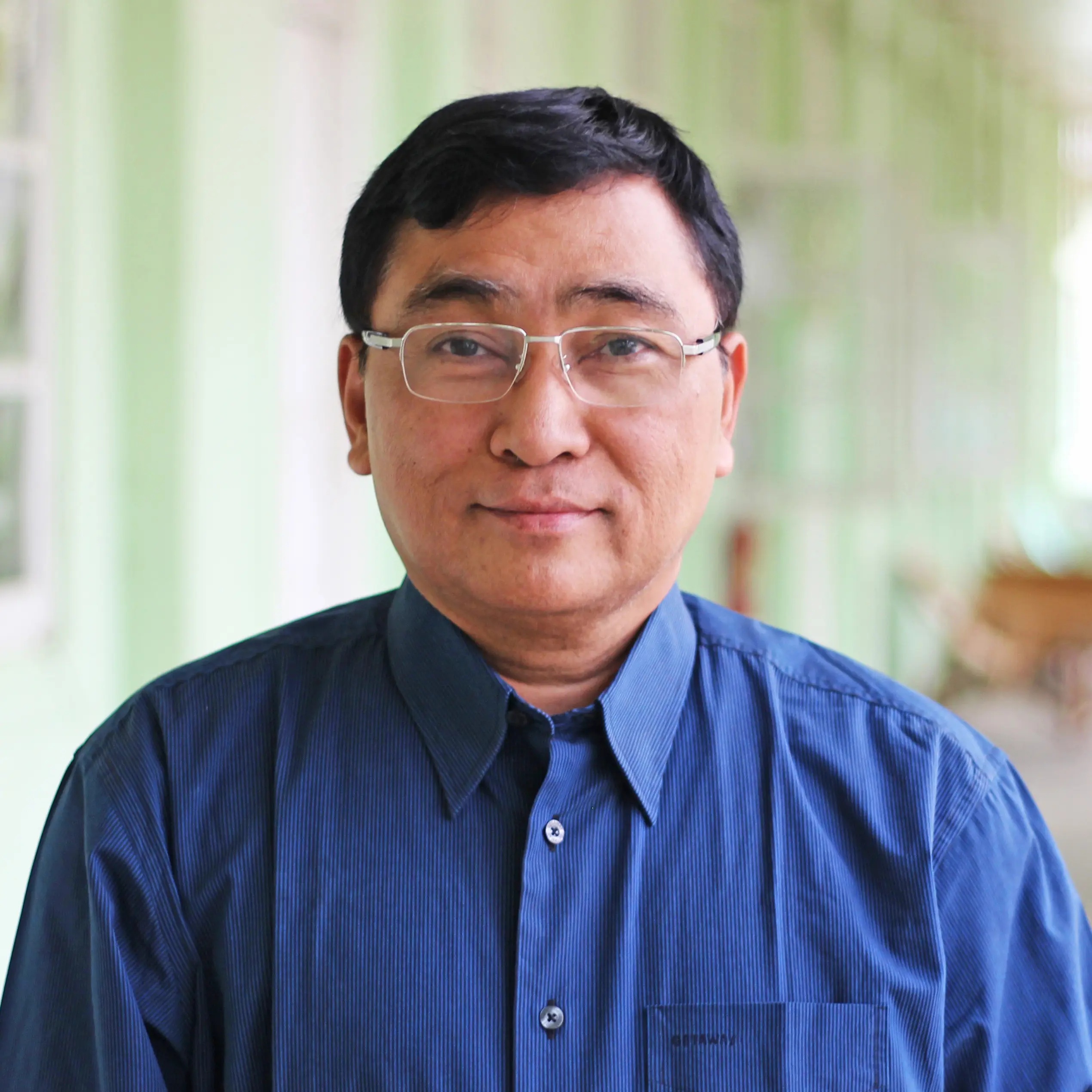
“Before the two-day seminar [on Myanmar at the Thai parliament last week], the NUG’s Ministry of Humanitarian Affairs and Disaster Management and EROs met for three days and drafted a parallel humanitarian assistance proposal by unanimous decision.
“Our proposal aims to provide a parallel or supplementary mechanism to make humanitarian assistance delivery more effective. Our proposed mechanism will involve the Royal Thai Government, EROs and the NUG, as well as certain organizations that will implement distribution of aid instead of AHA Center and MRCS.
“As the aid will be delivered across the border, we have selected The Border Consortium (TBC), an international NGO that we believe can provide effective delivery. Our proposal says that we are willing to cooperate with TBC and other INGOs that can work effectively at the border. And we will work together with CBOs [community-based organizations] and CSOs [Civil Society Organizations] that have been operating on the ground over the past three years. In this way, aid will reach the affected people in areas controlled by EROs, NUG and PDFs. This is what we have suggested in our proposal.
“And regarding the funding, the Thai initiative is small in scale and will only benefit 20,000 people. But more than two million people badly need humanitarian assistance. Across the country, 18 to 19 million people have been affected [by conflict]. But those two million people have been hit hardest – displaced and made homeless. There is a huge gap between 20,000 and two million. So, there is a need to implement a supplementary mechanism. International donors are aware of the humanitarian situation in Myanmar and are waiting for the time to provide effective help. With Thailand launching this cross-border humanitarian initiative, which involves establishing a safe zone at the border, if a supplementary mechanism can be implemented, aid will reach the people who need it. If international donors participate, we won’t then need to worry about funding.
“Another issue concerns security. As the plan is being implemented by the Royal Thai Government, I hope it will facilitate the safe delivery of aid into the country from the border.”
Effectiveness of the parallel humanitarian assistance mechanism
“We have presented the parallel humanitarian assistance proposal to the Thai government [via] the Prime Minister’s Office. It was explained to donors at the two-day seminar on Myanmar [in Bangkok last week] by the Karen National Union, on behalf of all the stakeholders, including the NUG and K3C [an alliance of the four ethnic armed organizations aligned with the NUG] and EROs. So, donor countries are now aware of the situation.
“We have already conducted an assessment of [Myanmar] people’s needs. Ethnic revolutionary organizations (EROs) and the NUG have conducted assessments in our respective areas. We can calculate the funding needed based on those assessments. We will explain the situation and solicit donors to supply aid through the Royal Thai Government. If they agree, we will select INGOs at the border. Then, through the selected INGOs, we will collaborate with experienced CBOs and CSOs in Myanmar that have been operating on the ground for the past three years. Aid would then be delivered safely across the border. If we can ensure that local humanitarian actors forward aid safely and people can receive it safely, this would be effective delivery.
“At the same time, aid delivered through the regime will reach people in areas it controls, so the needs of the people nationwide would be fulfilled. We are not opposing the initiative announced by the Thai government. We have only presented a plan for how humanitarian assistance can be delivered to reach a wider population. We will continue to negotiate with the Thai government for that.”


